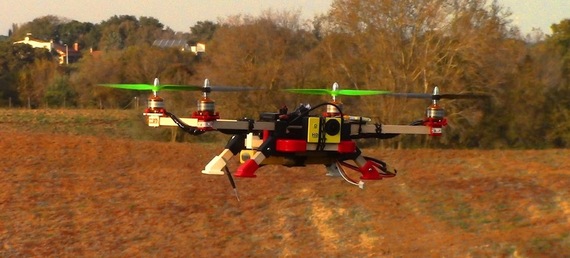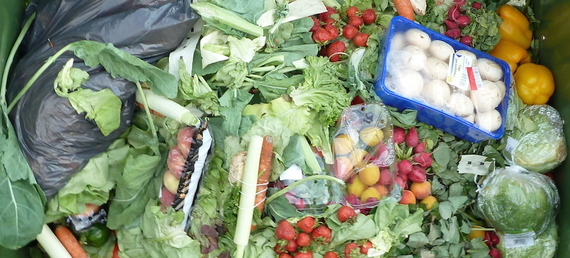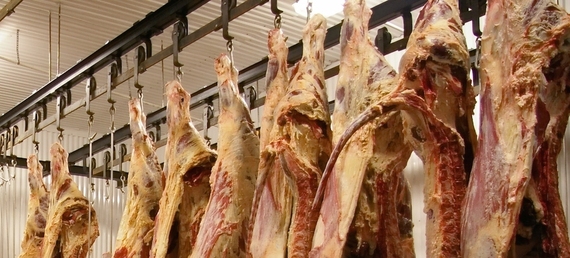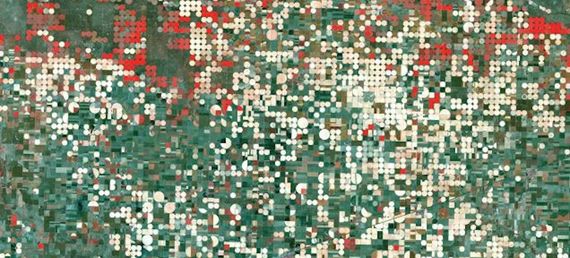Given that humans have been toiling away at agriculture for more than 5,000 years, it's kind of surprising that we aren't better at it. The reality is that we must improve if we want to feed the 870 million people who face hunger today, not to mention the 11 billion people who will inhabit the planet by 2100.
Most experts agree we can produce enough food for everyone both today and tomorrow, but plenty of questions remain about the financial and environmental costs. According to the World Resources Institute, feeding nine billion people -- think 2050 -- will require a 60 percent increase in the production of available food calories. Add in the calories needed to feed the animals that we eventually eat and the number jumps to 103 percent, or an additional six quadrillion calories per year.
One way to start, according to a June 2014 report by researchers at the University of Minnesota's Institute on the Environment, is to concentrate of specific regions, crops, and actions where a positive impact may be most easily achieved. The idea is to focus on 17 key crops that produce 86 percent of the world's calories while using up the most water and fertilizer. By applying "leverage points" where NGOs, foundations, governments, and businesses can try to make things happen, the report says, there's a chance that farmers can improve productivity while simultaneously protecting the environment, especially from nitrogen runoff that harms freshwater aquifers. The report says that China, India, the U.S., Brazil, Indonesia, and Pakistan, along with Europe, are the places where the most work is needed.
So as we start our search for thousands of trillions of new calories, what should we be doing first?
PRODUCE MORE FOOD
Obvious, right? The U. Minn report finds a huge "yield gap" -- the difference between potential and actual crop yield -- in many parts of the world. Closing just 50 percent of the gap in regions where it's widest could provide enough calories to feed 850 million people. Today, many parts of Africa, India, China, and Eastern Europe are producing well below their potential.

Relatively inexpensive drones equipped with cameras allow farmers survey hundreds or even thousands of acres and increase crop yields.
GROW FOOD MORE EFFICIENTLY
Agriculture impacts the climate, and the climate impacts agriculture. The U. Minn report looked for opportunities to reduce climate impacts by improving efficiency in fertilizing and irrigating crops. Agriculture is responsible for 20 to 35 percent of global greenhouse gas emissions. Think deforestation, methane from livestock, and nitrous oxide from crop fertilization. The study showed that globally, 60 percent of nitrogen and 50 percent of phosphorus fertilization practices exceed what crops need. China, India, and the U.S. are responsible for 66 percent of excess nitrogen and phosphorus use. It also looks like we could reduce water demand 8 to 15 percent without compromising food production. China and India are currently the biggest water wasters, according to the study.
Other ideas include aquaponics -- where fish farming and plant farming are combined -- and planting crops vertically inside future skyscrapers to save land and protect crops from weather damage.

The amount of food discarded by retailers and consumers in the most developed countries would be more than enough to feed all of the world's 870 million hungry people.
CUT BACK ON WASTE
This is a biggie. Studies suggest that 40 percent of fruits and vegetables grown in India go bad before being sold due to a lack of refrigeration or substandard transportation. Pakistan loses about 16 percent of the grain it stores due to rodent infestations. In the U.S., "ugly" fruits and vegetables are discarded rather than sold. It's hard to believe that 25 to 50 percent of food worldwide is wasted. Clearly there are plenty of calories to be captured here. In fact, the Food and Agriculture Organization of the United Nations says that food discarded by retailers and consumers in the most developed countries would be more than enough to feed all of the world's 870 million hungry people.
What to do:
- Improve storage facilities on farms in Africa and Asia, even if that just means putting harvested crops in plastic bags to keep pests away.
- Rethink the "best by" and "sell by" expiration dates on packaged foods in the developed world. The World Resources Institute, among others, says that most food is safe for much longer than those dates would imply.
- Eat more ugly food. Last year, French grocery chain Intermarché started selling what it called "inglorious fruits and vegetables" with special pricing. In March, Canadian supermarket chain Loblaw began selling so-called ugly potatoes and apples at a 30 percent discount to address Canada's estimated $30 billion of annual food waste.
- Face up to the expense. About 32 million metric tons of wasted food end up in U.S. municipal landfills annually, at a cost of about $1.5 billion a year to local governments.
- Compost like crazy. Many cities are experimenting with composting programs, but Seattle is the first to fine residents for throwing away compostable food waste.
EAT LESS MEAT
Perhaps we should feed fewer animals to feed more humans. Meat, especially beef, is stunningly inefficient to produce. (Growing 1,000 calories of beef takes more than 1,000 gallons of water, and wasting one kilogram of boneless beef is equivalent to wasting 24 kilograms of wheat. Chicken is about three times more efficient.) Put another way, if we took all the crops we use for animal feed and biofuel and used them to feed humans, we could feed an extra four billion people.

The loss of 1 kilogram of boneless beef has the same effect as wasting 24 kilograms of wheat due to inefficiencies in converting grain to meat.
Beef is bad for the environment too. According to Jamais Cascio, a distinguished fellow at the Institute for the Future, greenhouse gas emissions generated by the production of cheeseburgers in the U.S. annually is about equal to the greenhouse gas emissions from 6.5 million to 19.6 million SUVs.
Somewhere far down the line, lab-grown synthetic meat may become an option, but it won't be cost-efficient for decades, and who knows what it will taste like?
USE BIG DATA
Farming is actually much more high-tech than most of us realize. Today's farmers -- even small farmers -- are equipped with sensors, drones, aerial imaging, mobile apps, telematics, and real-time analytics to help them grow more efficiently. The trick now is to expand this technology exponentially, create cloud-based solutions, and apply Big Data analytics to improve all aspects of agricultural productivity "from field to fork" as the experts like to say. All these tools are used to create an environment of "precision agriculture," helping farmers figure out how to micromanage their fields down to the square foot.

Precision agriculture requires huge amounts of data, some of it collected from satellites. (Source: NASA)
It's only logical, then, that a company like Monsanto would spend $1 billion to buy weather analytics company Climate Corporation, and that agriculture technology startups working on products like real-time farm health-monitoring tools, outdoor wireless networks, automated WiFi fertilizer injectors, and pathogen detection systems are starting to pop up. We're sure to hear about much more innovation in the years to come. This is literally a growth industry.

By Don Willlmott
Don Willmott is a New York-based journalist who writes about technology, travel and the environment for a wide variety of publications and websites.
Visit XPRIZE at xprize.org, follow us on Facebook, Twitter and Google+, and get our Newsletter to stay informed.